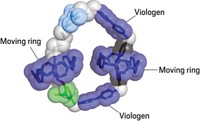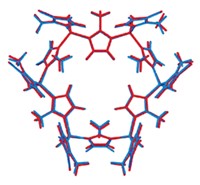Advertisement
Grab your lab coat. Let's get started
Welcome!
Welcome!
Create an account below to get 6 C&EN articles per month, receive newsletters and more - all free.
It seems this is your first time logging in online. Please enter the following information to continue.
As an ACS member you automatically get access to this site. All we need is few more details to create your reading experience.
Not you? Sign in with a different account.
Not you? Sign in with a different account.
ERROR 1
ERROR 1
ERROR 2
ERROR 2
ERROR 2
ERROR 2
ERROR 2
Password and Confirm password must match.
If you have an ACS member number, please enter it here so we can link this account to your membership. (optional)
ERROR 2
ACS values your privacy. By submitting your information, you are gaining access to C&EN and subscribing to our weekly newsletter. We use the information you provide to make your reading experience better, and we will never sell your data to third party members.
Materials
Toward A Mimic Of Photosynthesis
Synthetic assembly harvests light in one form and transports ions in another
by Bethany Halford
July 10, 2006
| A version of this story appeared in
Volume 84, Issue 28

A new artificial light-harvesting system has taken scientists one step closer to capturing photons and converting them into chemical energy as efficiently as nature does in photosynthesis. The self-assembling supramolecular system can also rearrange into an ion channel upon the addition of an intercalating molecule (Science 2006, 313, 84).
The helical photosystem's architecture features π stacks of fluorescent naphthalene diimides. These novel electron-deficient chromophores are held together by a scaffold of four rigid p-octiphenyl units. Designed and synthesized by an international team from Switzerland's University of Geneva and Germany's University of Würzburg, the assembly can span lipid bilayer membranes.
To study the assembly's photosynthetic properties, the researchers embedded the photosystem in the wall of a vesicle containing the electron acceptor quinone. Outside the vesicle sphere, they added a sacrificial electron donor. Irradiation with visible light produces electrons that quickly move from the donor, through the photosystem, and into the vesicle, where they reduce the quinone to hydroquinone.
This photochemical process consumes all the protons within the vesicle. To refill it, the researchers add an electron-rich dialkoxynaphthalene derivative to the system. This molecule intercalates into the naphthalene diimide layers and irreversibly untwists the assembly so that it forms a channel. The rearrangement shuts down the electron transport and allows protons to rush into the vesicle.
"By integrating a self-assembling molecular gate into a vesicular membrane, they demonstrate an elegant proton-consuming and -refilling system," write University of Tokyo chemists Takuzo Aida and Kazushi Kinbara in a commentary that accompanies the paper.
"Our approach is attractive because it identifies photosynthetic activity as a supramolecular function that depends directly on the precision of refined nanoarchitecture," explains Stefan Matile, the University of Geneva chemistry professor who spearheaded the research. "In this case, quantitative, ultrafast, and long-lived charge separation can occur in response to light without any donor or acceptor modules attached, and the absorbed photonic energy can be converted into chemical energy."
Matile admits that photosynthesis in lipid bilayers is primarily an academic pursuit, but he points out that the novel chromophores and new architecture developed for this system could have more practical applications. "Currently, one of our objectives is to adapt our approach to the construction of multicolored nanoarchitecture on gold in the hope to end up with photovoltaic devices," he says.
"This finding is important," Matile adds, "because it supports recent reports that suggest major efforts in basic research on optoelectric nanomaterials accomplished today may have the potential to help us meet tomorrow's energy demand in a sustainable way."





Join the conversation
Contact the reporter
Submit a Letter to the Editor for publication
Engage with us on Twitter